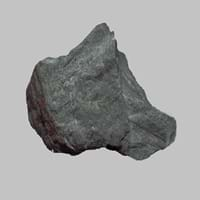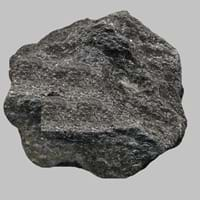Definition
Taconite is a low-grade iron ore which belongs to sedimentary rock and containing about 27% iron and 51% silica
A ganister is a hard, fine-grained quartzose sandstone or orthoquartzite which is basically used in the manufacture of silica brick typically used to line furnaces and is a type of sedimentary rocks.
Origin
Western Australia, Minnesota
England
Discoverer
Newton Horace Winchell
Unknown
Etymology
From the name of Taconic Mountains in New England
From gan′is-ter i.e a hard, close-grained siliceous stone, often forming the stratum which underlies a coal-seam
Class
Sedimentary Rocks
Sedimentary Rocks
Sub-Class
Durable Rock, Medium Hardness Rock
Durable Rock, Hard Rock
Group
Not Applicable
Not Applicable
Other Categories
Coarse Grained Rock, Opaque Rock
Coarse Grained Rock, Fine Grained Rock, Opaque Rock
Texture
Banded, Trellis
Clastic, Granular, Rough
Color
Red, Reddish Brown
Beige, Black, Brown, Colourless, Cream, Dark Brown, Green, Grey, Light Green, Light to Dark Grey, Pink, Red, White, Yellow
Durability
Durable
Durable
Scratch Resistant
Yes
Yes
Appearance
Layered, Banded, Veined and Shiny
Rough
Interior Uses
Decorative Aggregates, Entryways, Flooring, Homes, Interior Decoration
Decorative Aggregates, Entryways, Flooring, Homes, Interior Decoration
Exterior Uses
As Building Stone, Garden Decoration, Paving Stone
As Building Stone, Garden Decoration, Office Buildings, Paving Stone
Other Architectural Uses
Curbing
Curbing
Construction Industry
As Dimension Stone, Used for flooring, stair treads, borders and window sills.
Cement Manufacture, Construction Aggregate, for Road Aggregate, Production of Glass and Ceramics, Raw material for the manufacture of mortar
Medical Industry
Not Yet Used
Not Yet Used
Antiquity Uses
Artifacts
Artifacts, Monuments, Sculpture, Small Figurines
Commercial Uses
As a touchstone, Cemetery Markers, Creating Artwork
An Oil and Gas Reservoir, In aquifers, Petroleum reservoirs, Soil Conditioner, Source of Magnesia (MgO), Tombstones
Types
Not Available
Not Available
Features
Is one of the oldest rock
Available in Lots of Colors and Patterns, Generally rough to touch, Very fine grained rock
Archaeological Significance
Famous Monuments
Data Not Available
Data Not Available
Famous Sculptures
Data Not Available
Data Not Available
Pictographs
Not Used
Not Used
Petroglyphs
Not Used
Not Used
Formation
Taconite is a type of sedimentary rock formed when a river carries or transports pieces of broken rock as it flows. When the river reaches a lake or sea, its load of transported rocks settles or deposits at the bottom of sea or lake.
Ganisters are formed by the destruction of easily weathered minerals mainly feldspar, within the surface horizon of soil by soil-forming processes.
Mineral Content
Hematite, Magnetite, Quartz
Calcite, Clay, Clay Minerals, Feldspar, Micas, Quartz
Compound Content
Fe, Iron(III) Oxide, Silicon Dioxide
Aluminium Oxide, CaO, Iron(III) Oxide, Potassium Oxide, MgO, Sodium Oxide, Silicon Dioxide
Types of Metamorphism
Not Applicable
Not Applicable
Types of Weathering
Biological Weathering, Mechanical Weathering
Biological Weathering
Types of Erosion
Chemical Erosion, Coastal Erosion, Glacier Erosion, Water Erosion, Wind Erosion
Water Erosion, Wind Erosion
Grain Size
Large and Coarse Grained
Coarse or Fine
Fracture
Uneven, Splintery or Conchoidal
Splintery
Porosity
Highly Porous
Highly Porous
Compressive Strength
Not Available
Cleavage
Imperfect
Perfect
Specific Gravity
5-5.3
2.2-2.8
Transparency
Translucent to Opaque
Opaque
Density
Not Available
2.2-2.8 g/cm3
Resistance
Heat Resistant, Impact Resistant, Pressure Resistant, Wear Resistant
Heat Resistant, Impact Resistant, Pressure Resistant
Deposits in Eastern Continents
Asia
China, India, Iran, Iraq, Oman, Russia, Saudi Arabia, Taiwan, Thailand, Vietnam
China, India, Kazakhstan, Mongolia, Russia, Uzbekistan
Africa
Kenya, Morocco, South Africa, Tanzania
Namibia, Nigeria, South Africa
Europe
Austria, France, Greece, Italy, Malta, Poland, Portugal, Serbia, Spain, Sweden, United Kingdom
Austria, Denmark, Germany, Great Britain, Netherlands, Norway, Poland, Sweden, Switzerland, United Kingdom
Others
Greenland, Mid-Atlantic Ridge
Greenland
Deposits in Western Continents
North America
Canada, Mexico, USA
Canada, USA
South America
Bolivia, Brazil
Brazil
Deposits in Oceania Continent
Australia
New South Wales, Queensland, South Australia, Western Australia
New South Wales, New Zealand
Taconite vs Ganister Characteristics
Though some rocks look identical, they have certain characteristics which distinguish them from others. Characteristics of rocks include texture, appearance, color, fracture, streak, hardness etc. Taconite vs Ganister characteristics assist us to distinguish and recognize rocks. Also you can check about Properties of Taconite and Properties of Ganister. Learn more about Taconite vs Ganister in the next section. The interior uses of Taconite include Decorative aggregates, Entryways, Flooring, Homes and Interior decoration whereas the interior uses of Ganister include Decorative aggregates, Entryways, Flooring, Homes and Interior decoration. Due to some exceptional properties of Taconite and Ganister, they have various applications in construction industry. The uses of Taconite in construction industry include As dimension stone, Used for flooring, stair treads, borders and window sills. and that of Ganister include Cement manufacture, Construction aggregate, For road aggregate, Production of glass and ceramics, Raw material for the manufacture of mortar.
More about Taconite and Ganister
Here you can know more about Taconite and Ganister. The life cycle of a rock consists of formation of rock, composition of rock and transformation of rock. The composition of Taconite and Ganister consists of mineral content and compound content. The mineral content of Taconite includes Hematite, Magnetite, Quartz and mineral content of Ganister includes Calcite, Clay, Clay Minerals, Feldspar, Micas, Quartz. You can also check out the list of all Sedimentary Rocks. When we have to compare Taconite vs Ganister, the texture, color and appearance plays an important role in determining the type of rock. Taconite is available in red, reddish brown colors whereas, Ganister is available in beige, black, brown, colourless, cream, dark brown, green, grey, light green, light to dark grey, pink, red, white, yellow colors. Appearance of Taconite is Layered, Banded, Veined and Shiny and that of Ganister is Rough. Properties of rock is another aspect for Taconite vs Ganister. The hardness of Taconite is 5.5-6 and that of Ganister is 6-7. The types of Taconite are Not Available whereas types of Ganister are Not Available. Streak of rock is the color of powder produced when it is dragged across an unweathered surface. The streak of Taconite and Ganister is white. The specific heat capacity of Taconite is 3.20 kJ/Kg K and that of Ganister is 0.92 kJ/Kg K. Depending on the properties like hardness, toughness, specific heat capacity, porosity etc., rocks are resistant to heat, wear, impact, etc.Taconite is heat resistant, impact resistant, pressure resistant, wear resistant whereas Ganister is heat resistant, impact resistant, pressure resistant.





